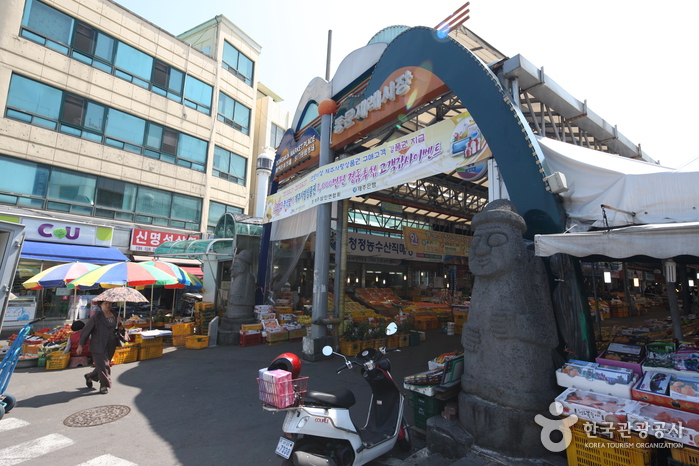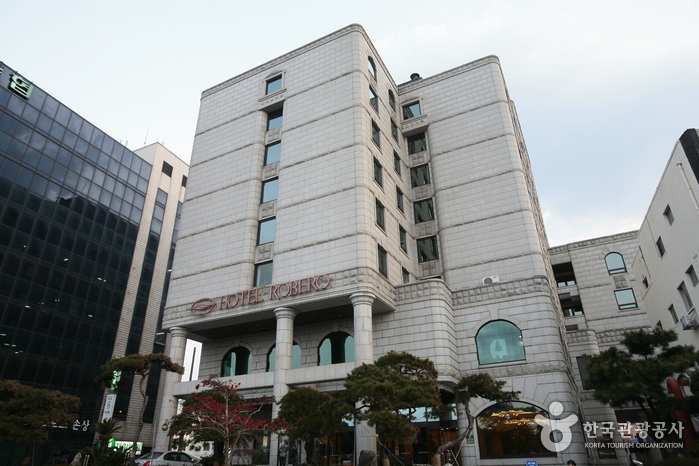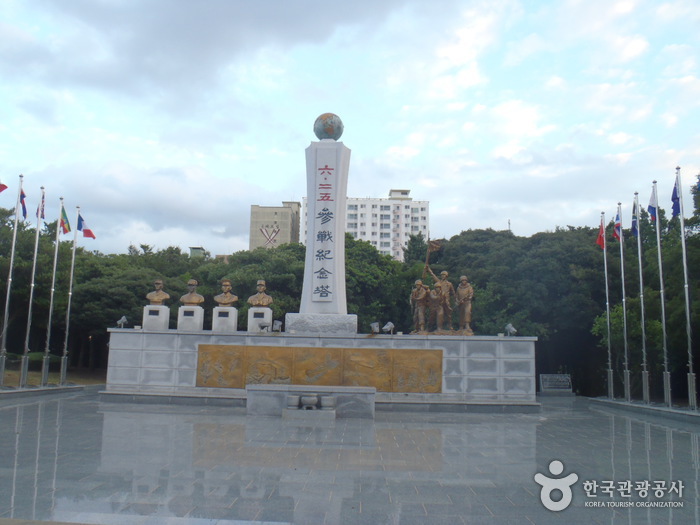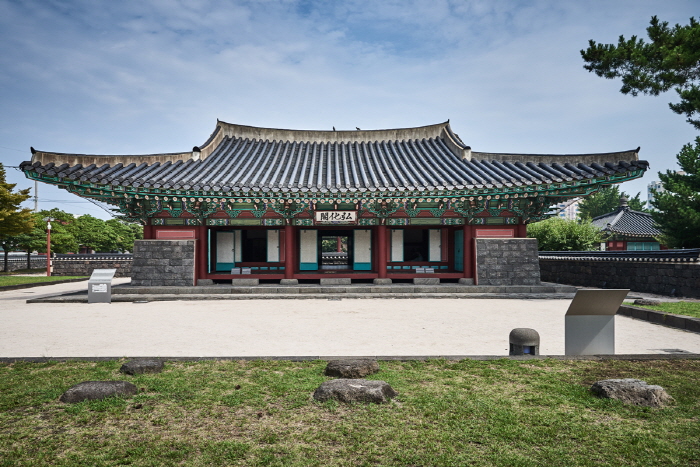Dongmun Traditional Market (동문재래시장)
1.5 Km 126457 2024-05-17
20 Gwandeok-ro 14-gil, Jeju-si, Jeju-do
+82-64-752-3001
Dongmun Traditional Market, steeped in history, stands a quintessential market of Jeju Island. Together with the adjacent Dongmun Traditional Fish Market, it forms the core of Jeju’s most significant and expansive permanent market, established right after Korea’s liberation in August 1945. Originally the island’s only permanent marketplace and a hub for its commercial activities, the market was relocated to its present site after a devastating fire in March 1954. It offers an array of goods such as vegetables, fruits, seafood, medicinal herbs, grains, and clothing. Known for its fresh catch, the market is a go-to place for seafood lovers, offering delicacies like sliced raw cutlassfish at reasonable prices. It’s also gaining popularity for its innovative dishes, including samhap (skate, pork, and kimchi combo) served with rice and abalone intestines, as well as tteokgalbi (grilled galbi patties) accompanied by whole abalone.
Staz Hotel Jeju Robero (스타즈 호텔 제주 로베로(구 로베로호텔))
1.5 Km 19787 2021-06-15
26, Gwandeok-ro, Jeju-si, Jeju-do
+82-64-757-7111
At Staz Hotel Jeju Robero, guests can enjoy a wide-open view of Jeju Island with fields of green stretching towards the horizon and the turquoise blue sea off in the distance. The hotel offers a variety of luxuries that ensure guests a comfortable stay. Among hotel conveniences are a large Italian-style banquet hall, a beauty and massage parlor, and a sauna fed by natural hot spring water. Staz Hotel Jeju Robero seeks to provide guests with a relaxing Jeju vacation that recharges both the mind and the body.
Samsonite - Jeju Chilseong Branch [Tax Refund Shop] (쌤소나이트 제주칠성)
1.5 Km 0 2024-04-18
#1, 67, Jungang-ro, Jeju-si, Jeju-do
-
Sinsan Park (신산공원)
1.6 Km 1983 2017-11-07
92-12, Sinsan-ro, Jeju-si, Jeju-do
Sinsan Park was opened to commemorate the arrival of the Olympic Torch to Korea for the '88 Seoul Olympic Games but now serves as a resting place for local citizens. It has become a popular location for family outings, and many couples enjoy walking along the paths through the shade of the forest.
Gwandeokjeong Pavillion (Jeju) [관덕정(제주)]
1.6 Km 27288 2024-03-15
19 Gwandeok-ro, Jeju-si, Jeju-do
+82-64-740-6000
One of the oldest buildings in Jeju, Gwandeokjeong Pavilion was established in 1448 by the magistrate of Jeju with the purpose of training local soldiers. This historical edifice is renowend for its intricately painted girders, adorned with murals depicting the ten symbols of longevity, scenes from the Battle of Red Cliffs, and hunting imagery. Additionally, the pavilion's signboard is reputed to feature the handwriting of Prince Anpyeong, a notable figure from the Joseon era. Gwandeokjeong Pavillion is part of the Jeju-mok Government Office complex.
Glass Story & Lens Story - Jungang-ro Branch [Tax Refund Shop] (글라스스토리&렌즈스토리중앙로점)
1.6 Km 0 2024-06-27
63, Jungang-ro, Jeju-si, Jeju-do
-
LG Best Shop - Jeju Ido Branch [Tax Refund Shop] (엘지베스트샵 제주이도점)
1.6 Km 0 2024-04-19
419, Yeonsam-ro, Jeju-si, Jeju-do
-
Jeju-mok Government Office (제주목관아)
1.6 Km 25919 2024-03-15
25 Gwandeok-ro, Jeju-si, Jeju-do
+82-64-710-6714
The Jeju-mok Government Office was a gwana, or regional government office, that historically served as the center of Jeju Island’s political, administrative, and cultural activities, spanning from its early days as the State of Tamna through the Joseon period. A significant portion of the structure was destroyed in a fire in 1434, leading to subsequent rebuilding efforts. From 1991, archeological excavations were conducted in four stages, enabling the meticulous restoration of several key buildings within the complex. These include the Honghwagak Pavilion, Yeonhuigak Pavilion, Uyeondang Pavilion, Gyullimdang Pavilion, and Gwandeokjeong Pavillion, all of which were restored by December 2002. Additionally, the complex is known for hosting annual nighttime events.


![Samsonite - Jeju Chilseong Branch [Tax Refund Shop] (쌤소나이트 제주칠성)](http://tong.visitkorea.or.kr/cms/resource/80/2889480_image2_1.jpg)

![Gwandeokjeong Pavillion (Jeju) [관덕정(제주)]](http://tong.visitkorea.or.kr/cms/resource/75/2513575_image2_1.jpg)
![Glass Story & Lens Story - Jungang-ro Branch [Tax Refund Shop] (글라스스토리&렌즈스토리중앙로점)](http://tong.visitkorea.or.kr/cms/resource/97/2887397_image2_1.jpg)
![Daon [Tax Refund Shop] (다온)](http://tong.visitkorea.or.kr/cms/resource/64/2887364_image2_1.jpg)
![Selden [Tax Refund Shop] (셀덴)](http://tong.visitkorea.or.kr/cms/resource/71/2887371_image2_1.jpg)
![LG Best Shop - Jeju Ido Branch [Tax Refund Shop] (엘지베스트샵 제주이도점)](http://tong.visitkorea.or.kr/cms/resource/30/2887430_image2_1.jpg)

 English
English
 한국어
한국어 日本語
日本語 中文(简体)
中文(简体) Deutsch
Deutsch Français
Français Español
Español Русский
Русский